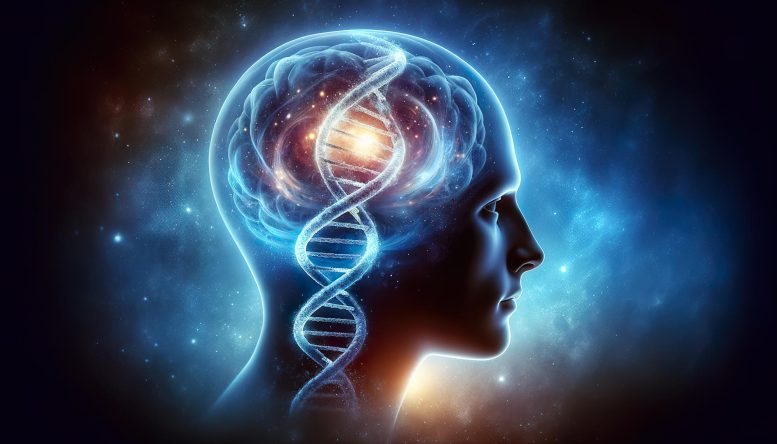
Researchers have identified genes that determine human head shape, shedding light on cranial diversity and conditions like craniosynostosis, potentially impacting our understanding of cranial development and disease. Credit: SciTechDaily.com
Researchers from the University of Pittsburgh and KU Leuven have identified a group of genes that play a role in determining the shape of human heads. Their study, recently published in Nature Communications, sheds light on the variety of human head shapes. Additionally, it could provide insights into the genetic factors underlying conditions like craniosynostosis, which impacts skull formation.
The research involved analyzing the cranial vault, the upper part of the skull that encloses the brain. This analysis led to the discovery of 30 genetic regions linked to various head shapes, with 29 of these regions being newly identified in this study.
“Anthropologists have speculated and debated the genetics of cranial vault shape since the early 20th century,” said co-senior author Seth Weinberg, Ph.D., professor of oral and craniofacial sciences in the Pitt School of Dental Medicine and co-director of the Center for Craniofacial and Dental Genetics. “We knew from certain rare human conditions and animal experiments that genes play an important role in vault size and shape, but very little was known about the genetic basis for typical features we see in the general population, such as what makes someone’s head long and narrow versus short and wide. This study reveals some of the key genes driving variation in this part of the human body.”
Implications and Applications of the Research
According to the researchers, one application of better understanding the factors that drive natural variation in human head shape is informing paleoanthropology studies, potentially shedding light on the early development of modern humans.
Weinberg and colleagues used magnetic resonance (MR) scans from more than 6,000 adolescents to extract 3D surfaces corresponding to the cranial vault. After dividing the 3D vault surfaces into incrementally smaller anatomical subparts and quantifying the shape of these subparts, they tested more than 10 million genetic variants for evidence of statistical association with measures of vault shape.
“Previous genetic studies of the cranial vault involved a small number of relatively simple measures,” added Weinberg. “While such measures are often easy to obtain, they may fail to capture features that are biologically relevant. Our analysis used an innovative approach capable of describing 3D vault shape in much more comprehensive and nuanced ways. This approach increased our ability to find genetic associations.”
An important discovery was that many of the strong associations are near genes that play key roles in the early formation of the head and face and regulation of bone development. For example, variants in and near the gene RUNX2, a major player in coordinating the development of the skull, were associated with multiple aspects of vault shape.
While some genes, including RUNX2, had global effects involving the entire vault, others showed more localized effects that only impacted a specific portion of the vault, such as the central forehead.
When the researchers compared the 30 genomic regions associated with head shape across participants with European, African, and Indigenous American ancestry, they found that the majority of genetic associations were shared across these different ancestral groups.
Although the study focused on healthy participants, the findings may reveal important clues about the biological basis of diseases involving the cranial vault, according to Weinberg.
Impact on Understanding Cranial Conditions
One of these conditions is craniosynostosis, which occurs when the bones of the skull fuse too early while the brain is still growing rapidly. Without neurosurgery, craniosynostosis can cause permanent disfigurement, brain damage, blindness, and even death. The team showed that variants near three genes associated with vault shape, BMP2, BBS9, and ZIC2, were also associated with craniosynostosis, suggesting that these genes could play a role in the development of the disease.
“This kind of study is possible due to the availability of publicly funded resources,” said Weinberg. “The original study that generated these MR scans is focused on understanding brain development and behavior. By creatively leveraging these resources, we have managed to advance discovery beyond that original scope.”
Reference: “Joint multi-ancestry and admixed GWAS reveals the complex genetics behind human cranial vault shape” by Seppe Goovaerts, Hanne Hoskens, Ryan J. Eller, Noah Herrick, Anthony M. Musolf, Cristina M. Justice, Meng Yuan, Sahin Naqvi, Myoung Keun Lee, Dirk Vandermeulen, Heather L. Szabo-Rogers, Paul A. Romitti, Simeon A. Boyadjiev, Mary L. Marazita, John R. Shaffer, Mark D. Shriver, Joanna Wysocka, Susan Walsh, Seth M. Weinberg and Peter Claes, 16 November 2023, Nature Communications.
DOI: 10.1038/s41467-023-43237-8
This research was supported by the National Institute of Dental and Craniofacial Research (R01DE027023, R01DE016886, R03DE031061 and X01HL14053) and the Intramural Research Program of the National Human Genome Research Institute, National Institutes of Health

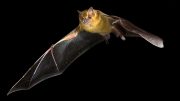



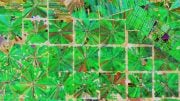

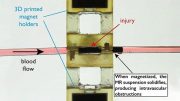
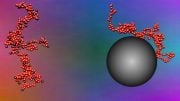
I had to laugh at this – mainly because of it’s old Nazi association. But I had been looking at heads recently & noticed that some humans have a VERY distinct rearward slope to their foreheads (as opposed to most which are vertical to the nose) which seems to be suggested as coming from Neanderthal roots, altho I have no idea if that’s just the illustrators imagination. However some humans of particular nastiness appear to have this rearward slope which I found very amusing – ah Neanderthal – that explains it ! It’s one of those things once you see you can’t unsee – like many people have very unmatched eyes !